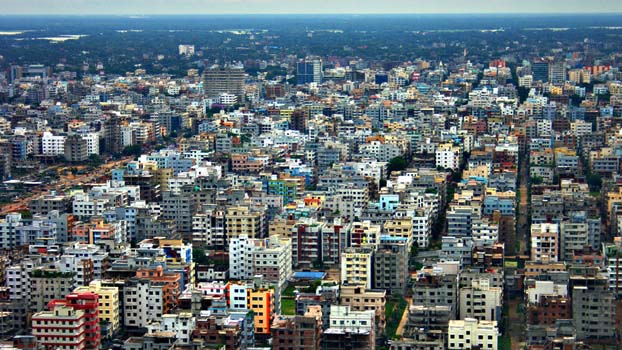‘Effective DAP must for liveable Dhaka’

An effective detailed area plan (DAP) is a must to turn the capital into a liveable, beautiful, dynamic, well-governed and modern city, experts say.
Although Rajdhani Unnayan Kartipakkha (RAJUK) has proposed several ways to make Dhaka a planned and livable city in its fresh DAP, experts and urban planners say that it will be tough to implement.
With the existing population of the capital, it is almost impossible to implement the proposed plan, an expert said.
In the draft proposal (2016-2035) of Rajuk, it has been proposed to formulate population density zoning to control the height of a building.
The fresh DAP proposes the maximum number of floors for residential buildings in Dhaka Metropolitan area to be eight.
Besides, there are proposals to have three to four schools in each ward and 25 playgrounds and parks.
To reduce waterlogging, the box culverts built on the canals in different areas will be removed and area-wise development action plans have been made in the new DAP.
However, urban planners say population density needs to be reduced not only by controlling the height of buildings, but also by simplifying and diversifying communications with existing cities around Dhaka.
According to DAP sources, population density zoning has been formulated to reduce the additional population pressure in the central Dhaka area, to help balanced development in different areas in the city.
Besides, it has been proposed to reduce the population density by decentralizing the communication system.
Moreover, two BRTs, five metros, six elevated expressways, two main roads parallel to Dhaka-Mymensingh Road, two ring roads, radial roads connected to the ring road and circular waterways have been proposed in this DAP.
Dr Akter Mahmud, Professor of Department of Urban and Regional Planning at Jahangirnagar University said, “Infrastructural development in all cities and municipalities of Bangladesh including Dhaka needs to be planned keeping in view the size of the population. If it cannot be possible, all plans will go in vain.”
“In order to make Dhaka livable, everyone has to take initiative to create employment in other parts of the country through economic planning and decentralization of development. At the same time, other cities in the country need to be developed,” he added.
About the DAP, General Secretary of Bangladesh Institute of Planners (BIP) Dr Adil Mohammad Khan told Bangladesh Post, “No plan will be effective without decentralizing and controlling the population of Dhaka. In order to control the population growth, it is necessary to control the height of the building. Besides, we have to give more emphasis to connect Dhaka with the existing cities around Dhaka through commuter rail and elevated roads.”
Citing the example of Singapore, Dr Adil said, “You must have at least one-third acre (20 Katha) of land to build a multi-storied building in Singapore. Then that country will approve constructing of high-rise buildings. But in our country, eight to10 storied buildings have been constructed in one to three kathas of land.
The Singapore government allows a maximum of three storey buildings on these lands. So, our development authorities have to put more emphasis here.”
In this regard, DAP project director Ashraful Islam told Bangladesh Post, “Although multi-storied buildings have been constructed in various parts of the capital, most of the civic amenities are not available there. As residents of a multi-storey building will have many vehicles including private cars, there must be wide roads and sufficient road connectivity. Otherwise, there will be traffic congestion in that area. There is also a crisis in other such civic amenities.”
“To address this situation, restrictions have been imposed on the height of residential buildings. The height of these buildings has been determined according to the population density and soil capacity,” he added.




